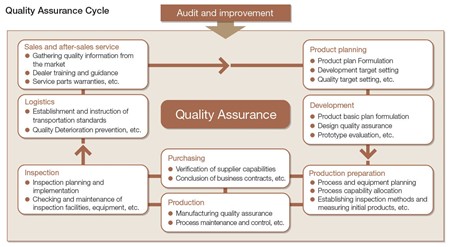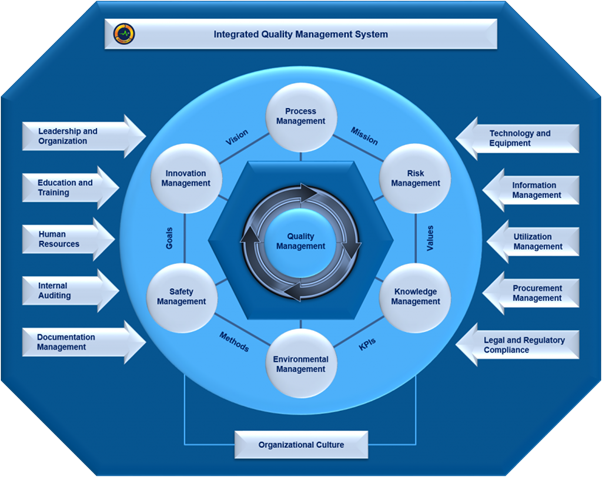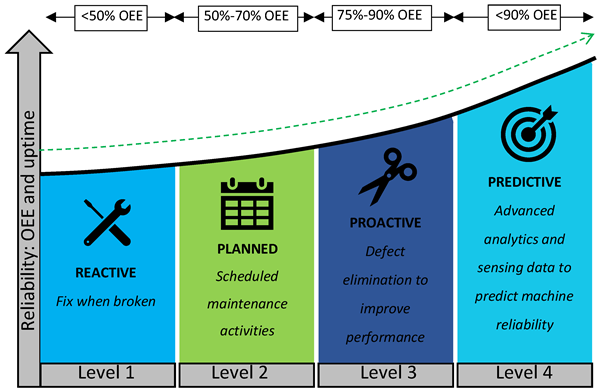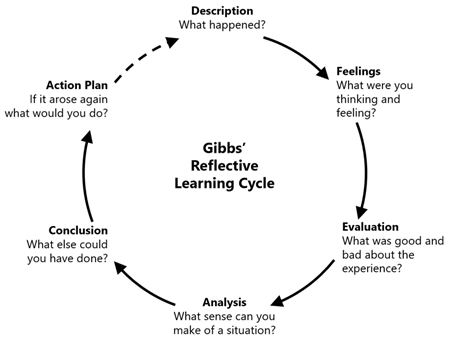$20 Bonus + 25% OFF CLAIM OFFER
Place Your Order With Us Today And Go Stress-Free
Boeing, a titan in the aerospace industry, stands as a paragon of aviation innovation and prowess. Founded in 1916 by William E. Boeing, this company has not only shaped the trajectory of commercial aviation but has also been instrumental in the realms of space exploration and military defense (Knoll-Csete and Kárász, 2021).
With a rich history spanning over a century, Boeing has continually set benchmarks in technological advancements, aircraft manufacturing, and global aerospace leadership. Its diverse portfolio, encompassing commercial jetliners, military hardware, and space technologies, underscores its pivotal role in both civil and defense aviation sectors globally.
However, Boeing's journey has not been devoid of turbulence. The company has faced formidable challenges, most notably the 737 MAX crisis, a defining moment that raised questions about safety protocols, regulatory compliances, and corporate ethics (Herkert et al., 2020).
This report aims to delve deep into Boeing's current situation, unravelling the complexities of the crisis it faces and evaluating the broader implications for its future. Through comprehensive analysis, this report will explore Boeing's internal dynamics, market challenges, and the evolving aerospace landscape.
By scrutinizing trends, opportunities, and strategic options, this report seeks to provide a holistic understanding of Boeing's position and the pivotal role of leadership in navigating through these challenging times.
Boeing, a longstanding leader in the aerospace industry, boasts a complex yet compelling profile characterized by significant strengths, notable weaknesses, opportunities for growth, and looming threats.
Boeing's strengths lie in its substantial market share, sustained by its comprehensive range of product offerings, including commercial jetliners, military hardware, and space exploration technologies (Hauqe, 2024).
A hallmark of Boeing’s prowess is its commitment to research and development, enabling cutting-edge innovations. Additionally, Boeing benefits from a robust and efficient supply chain, complemented by strategic global partnerships, enhancing its competitiveness and market footprint.
Despite these strengths, Boeing faces critical weaknesses. The company’s revenue is heavily reliant on its commercial aircraft segment, creating a vulnerability to market fluctuations in this sector.
Supplier dependency poses another challenge, where disruptions can significantly impact operations (Harvey and Turnbull, 2020). However, the most glaring weakness has been in the realm of product safety and design, highlighted by the 737 MAX crisis, alongside internal management issues.
Opportunities for Boeing are abundant in the realms of sustainable aviation, market expansion, and innovations like electric planes. The increasing global focus on sustainability presents Boeing with a chance to lead in eco-friendly aviation solutions (Amir and Weiss, 2024). Additionally, emerging markets offer new frontiers for growth, particularly in regions with increasing demands for air travel.
Conversely, Boeing faces threats from intense competition, especially from rivals like Airbus. Labor shortages and the complex nature of security and safety standards in aerospace present ongoing challenges (Osagie et al., 2023).
Moreover, global events like the COVID-19 pandemic have resulted in unprecedented disruptions in the supply chain and overall market demand.
According to Boeing (2023), The 737 MAX crisis stands as a stark embodiment of Boeing's struggles. This crisis began unfolding following the certification of the 737 MAX in 2017 and was exacerbated by two fatal crashes in 2018 and 2019, leading to its worldwide grounding. The mishap that resulted in this crisis was created by the combination of safety oversights and design inconsistencies mainly with MCAS, a flight control system used to enhance aircraft maneuverability.
An investigation into the 737 MAX crisis showed that MCAS was too aggressive and exclusively dependent on one sensor, thus prone to malfunction. When the system accidentally released, it directed causing down the nose of an aircraft and leaving pilots fighting to keep control (Boeing, 2023). This poor feature, in combination with weak pilot training and control, led to tragic consequences.
The ramifications of the 737 MAX crisis were profound. From the financial point of view, Boeing suffered tremendous losses caused by grounding and delays in delivery along with compensation payments and costs related to lawsuits (Boeing, 2023). The crisis greatly harmed Boeing’s image, undermining trust among airlines, regulators and the public. It revealed significant loopholes in the safety protocols and regulatory practices that elicited tremendous pressure resulting to calls for tough industry-wide safe measures.
The crisis also drew attention to the necessity of cultural change in Boeing, when safety and transparency become more important than profitability. Internally, the crisis led to leadership changes and a re-evaluation of Boeing’s corporate governance and ethical practices (Boeing, 2023). Externally, it pushed regulatory bodies to reassess their certification processes, demanding more stringent safety checks and balances.
The aerospace industry, where Boeing is a prominent player, is influenced by a myriad of trends across political, economic, social, technological, legal, and environmental domains. These trends not only shape the current landscape but also present a spectrum of opportunities for Boeing.
The operations of Boeing are greatly influenced by political factors such as government policies and geopolitical conflicts. Consider, for instance, the Russia-Ukraine conflict that is ongoing poses challenges in views of international relations and military contracts. Political stability and government support in major markets are critical to Boeing’s global activities (Williams, 2020). Boeing’s growth may be strengthened or weakened through alterations in defense funding, trade agreements and international treaties.
That economic ground is characterized by post-COVID pandemic with shaky air travel reduced demand of commercial aircraft (Maung et al., 2022). While dealing with global economic trends, such as inflation and currency rate changes, Boeing must overcome this reduced demand. The speed of economic recovery in the various regions is likely to have a significant impact on Boeing’s market strategies.
Trends continue to shift, especially in the wake of the pandemic that has changed people’ views on air travel. Public confidence in Boeing has also gone down as a result of the 737 MAX crisis, where it becomes crucial for this company to reconstruct its image (Herkert et al., 2020). Also, the concerns about sustainability and stewardship result from growing customer preferences and changing market needs.
In the field of technology, Boeing is a leader in innovation. R&D investments, particularly in fields such as hydrogen powered aircrafts are essential. The aerospace industry is changing quickly and bringing new technologies for increased efficiency, safety measures, and sustainability (Williams, 2020). First, Boeing’s capability of innovation and application into its products is also essential to ensure competitive advantage.
Legal considerations, including regulatory compliance, are paramount. The Federal Aviation Agency and other international regulatory bodies impose stringent standards that Boeing must adhere to (Schacter, 2020). Compliance with aviation laws, data protection regulations, and consumer rights policies is not only a legal necessity but also a factor influencing public perception and trust.
Environmental concerns are increasingly at the forefront of aerospace industry trends (Pierrat et al., 2021). Boeing faces the challenge of reducing its carbon footprint and aligning with global initiatives like the Paris Accord. Innovations in sustainable aircraft design and fuel efficiency are not just environmental imperatives but also market differentiators.
Technological innovation offers significant opportunities for Boeing. Advancements in areas such as autonomous flight, electric propulsion, and digital aviation technologies can revolutionize aircraft design and operation (SK, 2023). Boeing's continued investment in R&D is key to harnessing these advancements, not only to enhance its product offerings but also to lead the industry towards a more sustainable future.
Emerging markets present a fertile ground for growth. Regions experiencing an increase in air travel demand, particularly in Asia and Africa, offer new customer bases for Boeing's commercial aircraft. Moreover, the defense sector in these regions provides opportunities for expanding Boeing’s military hardware footprint (SK, 2023). Understanding and adapting to local market dynamics, regulations, and customer preferences will be critical for successful expansion.
In the face of ongoing challenges and an evolving aerospace landscape, Boeing has identified two pivotal strategic options have been identified. The implementation and success of these strategies hinge significantly on the role of leadership within the organization.
The first strategic option places a paramount emphasis on safety and quality assurance, especially in the wake of the 737 MAX crisis. This approach aims to solidify Boeing's position as a leading innovator in aerospace safety and reliability. Through focusing on the development of products such as total restructuring of MCAS system and other safety features, Boeing aims to deal with underlying problems that contributed towards 737 MAX crisis (Johnston and Harris, 2019).
A strategy is introduced which comprises the implementation of sophisticated safety technologies and enhancing pilot training programs to attain optimal operational safety standards. This strategy is not only about correcting past errors but also establishing new standards of aircraft safety and reliability for the industry.
Leadership’s role in this approach is to facilitate a culture that emphasizes on the safety and quality aspect. It is transformational leadership that will provide the impetus to make this renewed commitment towards safety recognised and embraced by staff across all levels.
Leaders need to promote ethical conduct and openness, which implies that every decision should be based on the organization’s safety policy (Bakker et al., 2023). This relates to effective communication, promoting employee responsibility and pursuing safety at all costs regardless of short-time benefits.
The second strategic option aims at widening Boeing’s market presence and diversifying its product lines. This approach aims at mapping new market territories and prospecting emerging sectors within the aerospace industry like space tourism together with advanced services in this sphere. The aim is to minimize reliance on established markets and diversify Boeing’s income sources (Mhatre et al., 2023).
By taking a closer look at market development and diversification, Boeing will be able to manage the risks that come with volatile markets while capitalizing on growth opportunities in emerging industries.
In applying this approach, visionary and empowering leadership is essential. Good leaders have the ability to see around corners by spotting emerging needs and new opportunities in an evolving global setting. They should start forming strategic alliances and partnerships, especially in developing countries.
This stratagem necessitates leaders to be flexible, culturally sensitive and responsive to the varied needs of new markets (Black, 2020). Leaders also have to ensure that the internationalization of the firm is in conformity with local regulations, culture and customers’ demands.
Despite its historic reputation as a leader in the field of Aerospace, Boeing is faced with formidable challenges evident from 737 MAX crisis and change dynamics. Strengths such as innovation and a great market presence are reduced by weaknesses and threats, which include safety issues along with high competition.
Political shifts, technological developments and environmental issues are new trends that dictate Boeing’s operational environment. It is therefore important that Boeing strategic plans involve focus on safety improvement, as well market diversification in order to recover and grow. Leadership is critical in enacting these strategies for Boeing to not only succeed its challenges but also excel with the changing nature of global aerospace.
Boeing, in the aftermath of the 737 MAX crisis, needs to strengthen its supply chain integrity (Eshun, 2020). A critical plan is improving supplier control and quality maintenance, especially by large partners such as Spirit AeroSystems. This is not just a matter of tough inspections but an overall rethink about the supplier consortium framework to ensure quality across the manufacturing value chain.
Such a strategy would require the use of Boeing teams that are specially deployed to supplier sites. These groups would perform stringent quality checks and validations to make sure that all elements or assembly passes must conform to Boeing’s strict requirements before they incorporate in the aircraft. The active approach presents a quality assurance operation that is qualitatively different from routine quality control and involves embedding into the supply chain.
This approach takes inspiration from Toyota’s famous quality control system. The collaboration of Toyota with its suppliers demonstrates a model implementation how to maintain such high standards throughout the supply chain.
The company’s approach extends to stringent inspections and the joint work with suppliers towards streamlining their processes (Wisner et al., 2021). This approach has played a key role in establishing Toyota as a symbol of dependability and quality.

Figure 1: Toyota's Quality Assurance Cycle
(Source: Toyota Motor Corporation, no date)
Boeing also needs to enhance its safety and inspection standards well beyond the current FAA requirements (Schacter, 2020). This preventative step may include more regular and detailed audits during the manufacturing stages and even past production. The goal is to develop a multi-layered safety net that catches possible problems before they become big.
The introduction of a more advanced QMS which exceeds current industry standards is necessary (Salimova et al., 2020). The system would handle not only the physical elements of an aircraft manufacturing process but also procedural and managerial issues that facilitate overall safety conditions.

Figure 2: Quality Management System
(Source: Systemico, no date)
In this regard, Airbus is a good example. The European aerospace corporation has developed high standards of safety and inspection that are fundamental to its operational system.
Woo et al. (2021) argued that Airbus’s adherence to such protocols is essential in maintaining its strong safety record and one of the most important elements contributing to competitiveness with respect to aerospace companies worldwide. Using this approach, Boeing can consolidate its safety promise, restore trust and re-assert the position as a leader in the market of aerospace.
The direction of Boeing is hinged on an impressive investment into digital transformation in both manufacturing processes and compliance with safety (Barbier, 2020).
Embracing advanced analytics for predictive maintenance and real-time monitoring of aircraft health is the strategic move abovementioned. With such approach, Boeing can prevent emerging problems from becoming disastrous and ensure an increase in the safety of operations.
An illustration of this method is GE’s implementation of digital solutions. GE makes use of advanced data analytics embedded in its manufacturing practices, especially the predictive maintenance (Çınar et al., 2020).
This move has not only increased their efficiency but also elevated the standards of safety, giving an example for others to follow. Boeing can use such investments to exploit technologies that streamline production, improve safety measures and eventually earn the trust of citizens.

Figure 3: Predictive Maintenance Framework
(Source: Çınar et al., 2020)
This move would catapult Boeing to the centre of aerospace innovation, combining traditional manufacturing prowess with contemporary digital skills. The introduction of these advanced systems would result in better workflows for the production process, which improves quality control and builds a safety culture that is key to Boeing’s future business success.
The following is a reflection on what I learnt from this analysis using Gibbs' Reflective Cycle:

Figure 4: Gibbs’ Reflective Cycle
(Source: Wong Chee Hong, 2023)
Description: In the process of analysing Boeing’s situation, which focused on its 737 MAX crisis and recovery strategies implemented afterwards, I went into some details about company challenges as well as potential strategic solutions. This analysis reviewed Boeing’s current operating and strategy, market trends against best practices within the industry.
Feelings: First, I was daunted by the depth of Boeing’s challenges that ranged from technical to managerial right down to maintaining a good reputation. The scope of the 737 MAX debacle combined with difficulties associated with aerospatial manufacturing and regulatory compliance proved a complicated puzzle. Nevertheless, as I moved on, my curiosity grew towards the possible remedies and approaches that may support Boeing’s recovery.
Evaluation: The task was not an easy one considering the highly technical nature of aerospace engineering and Boeing’s unique situation. The decoding of the most successful plans involved not only technical aspects, but also entailed market dynamics and regulatory backdrop.
Analysis: However, I overcame these challenges by using thorough research and comparisons with other leaders in the same industry. The situation of Boeing was put into a perfect context by looking at how companies such as Toyota and General Electric have managed to handle quality and safety. This comparative analysis was integral in creating a comprehensive perspective and developing appropriate recommendations.
Conclusion: In this analysis, I understood the importance of a comprehensive strategy that should take into account not only internal factors but also market tendencies and regulatory frameworks. As key steps towards regaining trust and ensuring long-term success, it became evident that Boeing needs to move toward integration with digital transformation and cooperate on independent audits by regulatory entities.
Amir, A.R. and Weiss, S.I. (2024) Boeing Company. Available at: https://www.britannica.com/topic/Boeing-Company (Accessed: 14 January 2024).
Bakker, A.B., Hetland, J., Olsen, O.K. and Espevik, R., 2023. Daily transformational leadership: A source of inspiration for follower performance? European Management Journal, 41(5), pp.700-708.
Barbier, L., 2020. Industry 4.0 Adoption for US Aerospace and Defense Industry.
Black, G., 2020. The Vital Connection of Self-Awareness to Ethical and Participative Leadership: In the Decision Making Processes (Doctoral dissertation, Alliant International University).
Boeing (2023) the 737 MAX MCAS Software Enhancement. Available at: https://www.boeing.com/commercial/737max/737-max-software-updates.page (Accessed: 14 January 2024).
Çınar, Z.M., Abdussalam Nuhu, A., Zeeshan, Q., Korhan, O., Asmael, M. and Safaei, B., 2020. Machine learning in predictive maintenance towards sustainable smart manufacturing in industry 4.0. Sustainability, 12(19), p.8211.
Eshun, E., 2020. The Defeathered Bird: A Case Study of the Boeing 737 Max Crisis.
Harvey, G. and Turnbull, P., 2020. Ricardo flies Ryanair: Strategic human resource management and competitive advantage in a Single European Aviation Market. Human Resource Management Journal, 30(4), pp.553-565.
Hauqe, A. (2024) Boeing SWOT analysis 2024: A well-researched report. Available at: https://swotwizard.com/boeing-swot-analysis/ (Accessed: 14 January 2024).
Herkert, J., Borenstein, J. and Miller, K., 2020. The Boeing 737 MAX: Lessons for engineering ethics. Science and engineering ethics, 26, pp.2957-2974.
Johnston, P. and Harris, R., 2019. The Boeing 737 MAX saga: lessons for software organizations. Software Quality Professional, 21(3), pp.4-12.
Knoll-Csete, E. and Kárász, I., 2021. The Characteristics of the Aviation Industry.
Maung, Y.S.Y., Douglas, I. and Tan, D., 2022. Identifying the drivers of profitable airline growth. Transport Policy, 115, pp.275-285.
Mhatre, A., Kamble, C., Shah, A. and Malim, S., 2023. Reviving The Boeing Project By Using Project Management Methodologies.
Osagie, O.E., Emeka, O.F. and Beatrice, E., 2023. Outsourcing benefits and complications. BW Academic Journal, pp.9-9.
Pierrat, E., Rupcic, L., Hauschild, M.Z. and Laurent, A., 2021. Global environmental mapping of the aeronautics manufacturing sector. Journal of Cleaner Production, 297, p.126603.
Salimova, T., Vatolkina, N., Makolov, V. and Anikina, N., 2020. The perspective of quality management system development in the era of industry 4.0. Humanities & Social Sciences Reviews, 8(4), pp.483-495.
Schacter, J.R., 2020. Delegating Safety: Boeing and the Problem of Self-Regulation. Cornell JL & Pub. Pol'y, 30, p.637.
SK, S.K., 2023. Mission Success: A Guide to US Military Tech Jobs, Defense, and Government Careers for Prospective Engineers. Sushant Khadka.
Systemico (no date) Quality Management System (QMS). Available at: https://www.systemico.ca/quality-and-risk-management/quality-management-system-qms/ (Accessed: 18 January 2024).
Toyota Motor Corporation (no date) Quality and service: ESG (environment, social, governance) activities: Sustainability, Toyota Motor Corporation Official Global Website. Available at: https://global.toyota/en/sustainability/esg/quality/ (Accessed: 18 January 2024).
Williams, B., 2020. Boeing and Washington State: Codependency and Moral Hazard. Gonz. L. Rev., 56, p.65.
Wisner, J.D., Tan, K.C. and Leong, K., 2021. Principles of supply chain management: A balanced approach. South-Western, Cengage Learning.
Woo, A., Park, B., Sung, H., Yong, H., Chae, J. and Choi, S., 2021. An analysis of the competitive actions of boeing and airbus in the aerospace industry based on the competitive dynamics model. Journal of Open Innovation: Technology, Market, and Complexity, 7(3), p.192.
Are you confident that you will achieve the grade? Our best Expert will help you improve your grade
Order Now










